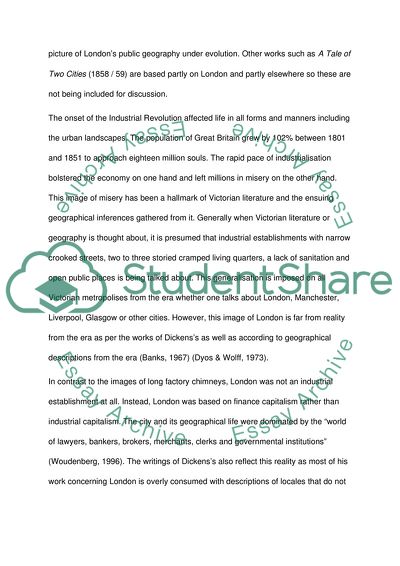Cite this document
(Descriptions Presented by Dickenss Through His Works as per the Essay, n.d.)
Descriptions Presented by Dickenss Through His Works as per the Essay. https://studentshare.org/geography/1768427-using-examples-show-how-we-can-use-writing-fiction-andor-non-fiction-by-charles-dickens-andor-his-contemporaries-to-enhance-our-understanding-of-selected-aspects-of-the-historical-geography-of-victorian-london
Descriptions Presented by Dickenss Through His Works as per the Essay. https://studentshare.org/geography/1768427-using-examples-show-how-we-can-use-writing-fiction-andor-non-fiction-by-charles-dickens-andor-his-contemporaries-to-enhance-our-understanding-of-selected-aspects-of-the-historical-geography-of-victorian-london
(Descriptions Presented by Dickenss Through His Works As Per the Essay)
Descriptions Presented by Dickenss Through His Works As Per the Essay. https://studentshare.org/geography/1768427-using-examples-show-how-we-can-use-writing-fiction-andor-non-fiction-by-charles-dickens-andor-his-contemporaries-to-enhance-our-understanding-of-selected-aspects-of-the-historical-geography-of-victorian-london.
Descriptions Presented by Dickenss Through His Works As Per the Essay. https://studentshare.org/geography/1768427-using-examples-show-how-we-can-use-writing-fiction-andor-non-fiction-by-charles-dickens-andor-his-contemporaries-to-enhance-our-understanding-of-selected-aspects-of-the-historical-geography-of-victorian-london.
“Descriptions Presented by Dickenss Through His Works As Per the Essay”. https://studentshare.org/geography/1768427-using-examples-show-how-we-can-use-writing-fiction-andor-non-fiction-by-charles-dickens-andor-his-contemporaries-to-enhance-our-understanding-of-selected-aspects-of-the-historical-geography-of-victorian-london.


